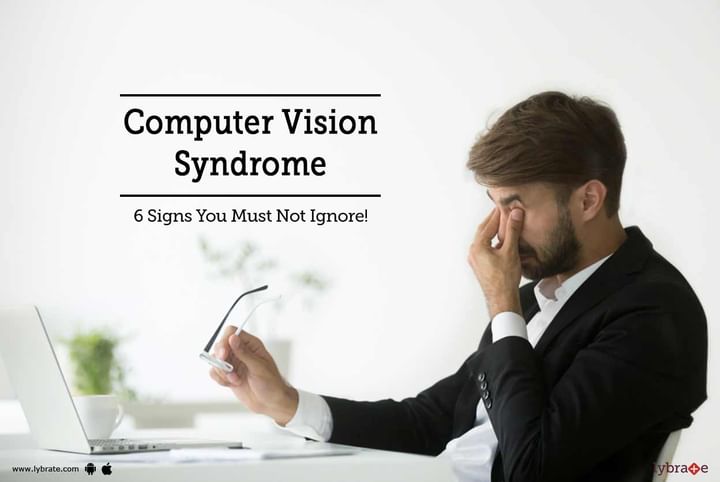Computer Vision Syndrome - 6 Signs You Must Not Ignore!
With everything requiring a computer to execute, more and more people end up looking at the computer screen for hours on end. This could range anywhere from a couple of hours to really long hours like 16 to 18. The effect of is a group of symptoms, which are collectively known as computer vision syndrome or CVS (syndrome means a collection of symptoms). The cause of this is the strain and pain resulting from constant staring at the monitor.
It is a type of repetitive stress injury, where a particular organ, the eye here, is subjected to repeated action (staring at a monitor) resulting in a group of symptoms. This is also compounded by age, where the flexibility to adjust to near and far vision is gradually reduced.
Symptoms of CVS:
There is no damage per se, but a constant strain on the eyes leads to:
- Blurred vision
- Double vision
- Dryness of the eyes
- Redness of the eyes
- Irritation of the eyes
- Headaches and neck/back aches
This could be a progressive condition, where the symptoms get worse with time. Treatment is definitely an option once the problem sets in, but this is a condition which can be definitely prevented with some simple, effective steps.
- Desk arrangement: Make sure the desk or monitor is slightly below eye level, about 30 inches away from the face. If you are straining the neck or the back to look at the monitor, it requires a change. The chair also can be changed in height to suit the seating. Also, prints can be pinned to the workstation when something is being typed, so constantly looking up and down while typing is avoided.
- Screen type: Move away from the older tube-style monitor with an LCD screen, which is easier on the eye. Check the computer settings so that brightness, contrast, and font size and shape and contrast are altered to suit your convenience. Ensure you are not requiring to strain to read.
- Alter the lighting: Look around you, and ensure there is adequate lighting with no glares on the monitor from surrounding windows or bright lights. A glare filter on the monitor is an effective way to manage this.
- Rest your eyes: Follow the 20-20-20 rule, with a 20-second break every 20 minutes where you look at something 20 feet away.
- Keep them moist: Blink your eyes constantly to ensure there is enough moisture. Eye drops can be used if required additionally.
- Frequent breaks: Not just your eyes, this also reduces strain on the neck and the back.
- Regular eye checkups: An annual visit, especially after 40, is a must for optimal eye health.
In case you have a concern or query you can always consult an expert & get answers to your questions!



+1.svg)
